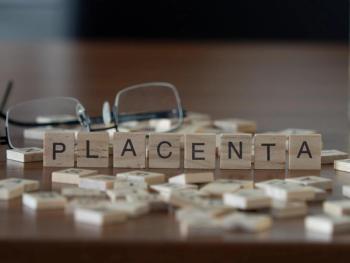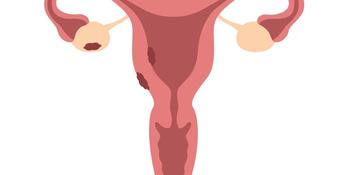
Thin endometrium may not hinder IVF success

A new study finds IVF can be successful even in people with thin endometria, challenging previously held beliefs by fertility specialists.
Many fertility specialists have long believed that having a thin endometrial lining—the inner layer of tissue in the uterus that supports a fertilized egg—could be an impediment to the implantation of an embryo. Thus, for patients in the U.S. with thin endometria, in vitro fertilization (IVF) procedures are often delayed until the lining thickens.
But a thin endometrium might not significantly impact the chance of successful pregnancy, a new study published in Human Reproduction finds.
In the study, researchers analyzed data from 25 participating fertility centers around the world. They found that for many patients, having a thin endometrium was not associated with a decreased chance of having a live birth.
“The infertility journey is very challenging—it’s a consuming experience,” says principal investigator Emre Seli, MD, professor of obstetrics, gynecology & reproductive sciences at Yale School of Medicine. “Our research is important because our patients want to know their chances of a successful pregnancy, and if there is an impediment, how significant it is.”
Thin endometrium does not typically hinder implantation
Seli’s team studied over 30,000 IVF cycles between January 2017 and December 2022 from clinics located in the U.S., Spain, and the United Arab Emirates (UAE). Each of these cycles involved a frozen embryo transfer of a single embryo that had previously been genetically tested.
The researchers first looked at how many IVF cycles were performed in patients with thin endometria (defined in this study as less than seven millimeters in thickness). In clinics in the U.S. and Spain, where clinicians often avoid conducting embryo transfers in these instances, only around 3% and 5% of embryo transfers, respectively, occurred in patients with thin endometria. On the other hand, in the UAE, where clinics are less concerned about thinness, the rate was around 12% of transfers.
For cycles performed at clinics in the UAE, thin endometria were not correlated with lower birth rates, the researchers found. But in clinics in the U.S. and Spain, the researchers did find that having an endometrium below seven millimeters was associated with 20% fewer live births.
However, this does not necessarily mean that a thin endometrium itself is driving the birth rate, says Seli.
While doctors in the participating clinics from the UAE tend to initiate IVF in patients regardless of endometrium thickness, in the United States and Spain, patients with thin endometria are often given medications to thicken them or cycles are cancelled. Therefore, most of the U.S. and Spain patients with thin endometria included in the study were a specific population, one that had been unresponsive to those types of interventions in the past. What causes that unresponsiveness could account for the differences in birth rates, says Seli.
“It’s likely not the thin lining itself that is causing the problem, but rather an underlying mechanism that is both driving a more persistent thin lining and causing less successful embryo implantation,” he says. What might be driving this process is still unclear. “In the overall population, many, many patients may have a thin lining, which should not decrease their success rates.”
The study also found that many patients had successful pregnancies even with endometria thicknesses below five millimeters.
“One can have a baby at four, five, six millimeters with just a slightly decreased success rate,” says Seli.
In future research, Seli’s team is working on building a predictive model that will guide fertility specialists in informing patients on their likelihood of a successful pregnancy.
Newsletter
Get the latest clinical updates, case studies, and expert commentary in obstetric and gynecologic care. Sign up now to stay informed.











